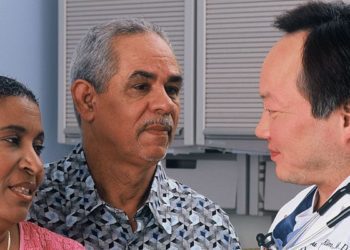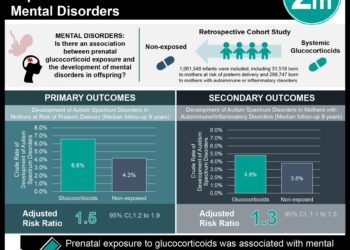#VisualAbstract: Substance use and mental health conditions in adolescents associated with future non- prescription opioid use
1. Recreational substance use and mental health problems were found to be independently associated with non-medical prescription opioid use in high school students.
2. Adolescents who used a greater number of different substances (alcohol, cannabis, etc.) or who had more comorbid mental health disorders had incrementally higher odds of future non-medical prescription opioid use.
Evidence Rating Level: 2 (Good)
Study Rundown: Opioid overdose is one of the leading causes of accidental death in adolescents. Because non-medical prescription opioid use can lead to intravenous opioid use, it is an important target in decreasing both mortality and morbidity from opioid use in adolescents. To date, most of the data regarding adolescent risk factors for non-medical prescription opioid use is cross sectional. This prospective cohort study found that both concurrent use of other non-opioid substances (cannabis, alcohol, other), as well as various mental health problems including depressive and manic symptoms, are correlated with non-medical prescription opioid use in high school. Furthermore, the predictive value of each of these factors was cumulative, so that the more substances an adolescent used, or the more mental health problems they had, the higher their odds of using non-medical prescription opioids recreationally. This study is strengthened by its large, socio-demographically diverse population, as well as its robust supplemental analyses. It is limited by its reliance on self-report survey measures, and by several important demographic factors not screened for such as baseline prescription opioid use and medical comorbidities. Overall, these findings highlight that screening for substance use and mental health disorders may help identify adolescents most at risk of future opioid use, and to whom targeted interventions could be applied.
Click to read the study in PEDIATRICS
Relevant Reading: Prescription opioid misuse and risky adolescent behaviour
In-Depth [prospective cohort]: This prospective cohort study gathered survey data over a 42-month period, following 3396 students from 9th grade to 12th grade. The student population was socio-demographically diverse and included students from 10 different Los Angeles high schools. At baseline, all students enrolled in the study were never-users of recreational non-medical prescription opioids. The primary outcome measure was self-reported use of non-medical prescription opioids, and data were also collected on socioeconomic variables, substance use, and mental health problems. This study found that among all participants, the incidence of non-medical prescription opioid use at the end of the study period was 17.9%. Adolescents who screened positive for 1 substance use problem during the study period were at a 3.74 greater odds of non-medical prescription opioid use than those who did not (95% CI, 2.79-5.01). On the other hand, adolescents who screened positive for 3 substance use problems were at a 9.69 greater odds (5.63-16.68). Adolescents who screened positive for 5-6 mental health problems were at 4.07 greater odds than those without any mental health problems (2.24 – 7.44). These associations remained even after robust supplemental analyses of the data.
Image: PD
©2021 2 Minute Medicine, Inc. All rights reserved. No works may be reproduced without expressed written consent from 2 Minute Medicine, Inc. Inquire about licensing here. No article should be construed as medical advice and is not intended as such by the authors or by 2 Minute Medicine, Inc.







